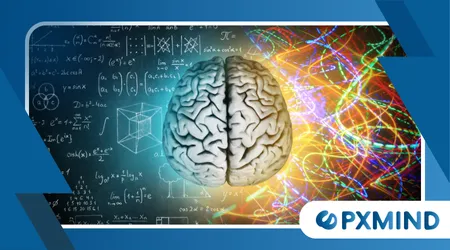Come reagisce il cervello alle ricompense inaspettate

L'intricata danza di Come reagisce il cervello alle ricompense inaspettate rivela un meccanismo fondamentale di motivazione e apprendimento.
Annunci
Questa profonda risposta neurale plasma le nostre decisioni quotidiane. È un potente motore di coinvolgimento e formazione della memoria.
Il fattore sorpresa: perché la novità eccita la mente
Eventi piacevoli e inaspettati innescano una cascata neurologica molto più forte. Le ricompense prevedibili, pur essendo soddisfacenti, semplicemente non generano lo stesso livello di eccitazione.
Il cervello dà priorità alle informazioni che si discostano da quelle previste.
Questo segnale di "sorpresa" è fondamentale per aggiornare i nostri modelli interni del mondo. Ci dice che è appena accaduto qualcosa di nuovo e importante.
La novità predispone il sistema a un'elaborazione e a una memorizzazione più approfondite.
L'elemento inaspettato aumenta l'impatto emotivo della ricompensa, rendendo l'esperienza più memorabile e rafforzando le azioni associate.
Il grande ingresso della dopamina: più di un semplice piacere
Molti presumono che la dopamina sia la "sostanza chimica del piacere", ma il suo ruolo è molto più complesso. Segnala principalmente il errore di previsione—la differenza tra la ricompensa prevista e quella effettiva.
Quando ci si aspetta una ricompensa, i neuroni della dopamina si attivano in modo intenso Prima la ricompensa arriva. L'arrivo effettivo spesso provoca un picco minore, se non nullo.
Tuttavia, quando una ricompensa è inaspettato, si verifica un'enorme esplosione di segnali di dopamina. Questo intenso rilascio trasmette il messaggio: "È meglio del previsto!"
Questo meccanismo, noto come Errore di previsione della ricompensa (RPE), è fondamentale per l'apprendimento per rinforzo. È il modo in cui il cervello dice: "Presta attenzione e aggiorna la tua strategia".
L'anatomia dell'eccitazione: le principali regioni cerebrali in azione
Diverse regioni cerebrali interconnesse orchestrano la risposta alle ricompense a sorpresa. Area tegmentale ventrale (VTA) è dove viene prodotta in gran parte la dopamina.
I progetti VTA al Nucleo accumbens (NAc), un attore centrale nel circuito della ricompensa cerebrale. L'aumento della dopamina nel NAc segnala la rilevanza motivazionale.
IL Corteccia prefrontale (PFC) Svolge anche un ruolo regolatorio fondamentale. Utilizza questo segnale RPE per integrare le nuove informazioni nella pianificazione e nel processo decisionale futuri.
Per saperne di più: Comprendere e gestire la sindrome dell'impostore sul lavoro
Queste aree lavorano in sinergia, creando essenzialmente una memoria potente e duratura. Questa coreografia neurale spiega il fascino del successo spontaneo.

Apprendimento e adattamento: il potere dell'imprevedibilità
Le ricompense imprevedibili sono potenti catalizzatori per il cambiamento comportamentale e l'apprendimento. Creano legami associativi più forti di quelli prevedibili. Consideriamo il meccanismo della gamification.
Un programma di rinforzo a rapporto variabile, in cui le ricompense sono casuali, è estremamente efficace. Ecco perché le slot machine e i feed dei social media sono così coinvolgenti.
Il cervello cerca costantemente di colmare il divario tra previsione e realtà. L'incertezza mantiene il sistema altamente attento e attivo.
Questa continua ricerca di schemi, anche dove non ne esistono, alimenta la perseveranza. L'attesa stessa diventa, col tempo, un meccanismo di ricompensa.
Il lato negativo del piacere: dipendenza e imprevedibilità
Sebbene utile per l'apprendimento, questo meccanismo può anche essere alterato da comportamenti di dipendenza. Sostanze e attività che generano picchi intensi e inaspettati di dopamina possono essere problematiche.
La natura imprevedibile del successo nel gioco d'azzardo, ad esempio, crea una forte dipendenza. Il cervello diventa iperfocalizzato alla ricerca del prossimo segnale RPE importante.
Guarda quanto è interessante: La “regola dei due minuti” per affrontare la procrastinazione
Altera l'aspettativa di base delle ricompense, rendendo noiose le attività normali e prevedibili. Questo fenomeno contribuisce in modo significativo ai cicli di comportamento compulsivo.
La naturale predisposizione del cervello verso la novità e la sorpresa è un'arma a doppio taglio. Stimola l'esplorazione, ma anche la vulnerabilità alla formazione di abitudini.
La carta fedeltà della caffetteria
Immagina che un bar ti offra un dolce gratis ogni dieci acquisti. Si tratta di una ricompensa prevedibile e a percentuale fissa, gratificante ma non entusiasmante.
Ora, immagina che lo stesso negozio distribuisca a caso un "Biglietto d'Oro" per una settimana di caffè gratis. Questa è una sorpresa, e molto più emozionante.
La ricompensa inaspettata crea un'impronta emotiva più forte e spinge a visite più frequenti. Il rinforzo variabile è un potente strumento comportamentale.
Questa è una chiara illustrazione di Come reagisce il cervello alle ricompense inaspettate in un contesto di vendita al dettaglio. Dimostra il potere commerciale della sorpresa.
Approfondimento scientifico: i dati sulla dopamina
La ricerca sottolinea costantemente il ruolo cruciale del sistema dopaminergico. Uno studio fondamentale del 2018 pubblicato su Neuroscienze della natura ha evidenziato questo.
La ricerca ha ribadito che l'intensità della risposta dopaminergica è correlata all'entità dell'errore di previsione della ricompensa. In particolare, il nucleo accumbens mostra un collegamento diretto.
++ Come combattere la stanchezza pomeridiana senza caffeina
37% dei nostri processi decisionali quotidiani sono fortemente influenzati da stimoli positivi inaspettati. Questa statistica rivela l'impatto quotidiano dell'RPE.
Come reagisce il cervello alle ricompense inaspettate è un aspetto chiave delle neuroscienze computazionali. Comprendere questo aspetto aiuta a trattare la depressione e le dipendenze.

Il bonus e-mail inaspettato: come reagisce il cervello alle ricompense inaspettate
Consideriamo un dipendente stipendiato che si aspetta uno stipendio regolare. Il versamento di routine provoca un piccolo picco di dopamina.
Un mese, il loro datore di lavoro li sorprende con un significativo bonus di rendimento, non annunciato. Il guadagno economico viene immediatamente riconosciuto.
L'intenso RPE genera un enorme aumento della motivazione e della fidelizzazione aziendale. Si tratta di un rinforzo positivo potente e immediato.
Questo evento è più rinforzante di un bonus annuale programmato, proprio per la sua imprevedibilità. Esemplifica Come reagisce il cervello alle ricompense inaspettate sul posto di lavoro.
Il faro e la nebbia
Il sistema RPE del cervello è come un faro nella nebbia dell'incertezzaQuando tutto è buio (bassa previsione), un improvviso lampo di luce (ricompensa inaspettata) è incredibilmente luminoso e significativo.
Un raggio prevedibile (ricompensa attesa) è utile, ma diventa di routine e meno evidente. Lo shock della luce inaspettata è ciò che guida la nave (il nostro comportamento) nel modo più efficace.
Questa costante ricalibrazione è essenziale per la sopravvivenza e l'adattamento. È ciò che ci rende adattabili e ci spinge a ricercare risultati migliori.
Considerato il potere neurologico della sorpresa, non dovremmo tutti sforzarci di introdurre un po' di imprevedibilità benigna nelle nostre routine?
| Tipo di ricompensa | Livello di previsione | Risposta dopaminergica (RPE) | Impatto dell'apprendimento |
| Atteso e consegnato | Alto | Basso/Nessuno | Manutenzione |
| Atteso e omesso | Alto | Segnale negativo (calo) | Apprendimento tramite evitamento |
| Inaspettato e consegnato | Basso | Picco enorme | Rinforzo forte |
| Inaspettato e omesso | Basso | Basso/Nessuno | Nessun cambiamento |
Sfruttare il potere della sorpresa: come reagisce il cervello alle ricompense inaspettate
La scienza di Come reagisce il cervello alle ricompense inaspettate dipinge un quadro vivido della motivazione umana. È un sistema progettato per massimizzare l'apprendimento e la sopravvivenza in un mondo dinamico.
Dalle interazioni sociali alle decisioni economiche, il potere della sorpresa è innegabile. Comprendere il meccanismo della dopamina ci permette di progettare sistemi migliori.
Incorporando strategicamente elementi di imprevedibilità, possiamo aumentare il coinvolgimento e promuovere un cambiamento comportamentale positivo. Il cervello è predisposto al piacere e alla scoperta.
Domande frequenti
Qual è la sostanza chimica principale coinvolta nelle ricompense inaspettate?
La dopamina è il neurotrasmettitore principale. Segnala l'errore di previsione della ricompensa (RPE), ovvero la differenza tra ciò che ci si aspettava e ciò che si è effettivamente ricevuto.
Tutte le ricompense inaspettate sono piacevoli?
Non necessariamente. Mentre le ricompense positive inaspettate sono piacevoli, il sistema registra anche esiti negativi inaspettati (o l'omissione di una ricompensa attesa), generando un segnale RPE negativo, che stimola l'apprendimento avversivo.
Posso usare questa conoscenza per motivarmi?
Sì. Introdurre nella tua routine piccole e imprevedibili ricompense positive o "premi" può essere un modo molto efficace per aumentare la motivazione e far sembrare i compiti meno noiosi, sfruttando la naturale predisposizione del tuo cervello verso le novità.
Questo meccanismo è correlato al motivo per cui le persone diventano dipendenti dal gioco d'azzardo?
Assolutamente sì. Il gioco d'azzardo utilizza un programma di rinforzo a rapporto variabile: le vincite sono imprevedibili e casuali.
Questa casualità genera segnali RPE di dopamina massimali, rendendo l'attività altamente avvincente.
++ Cosa succede al nostro sistema dopaminergico quando viviamo eventi avversi?
++ I neuroni della dopamina condividono una funzione di risposta comune
